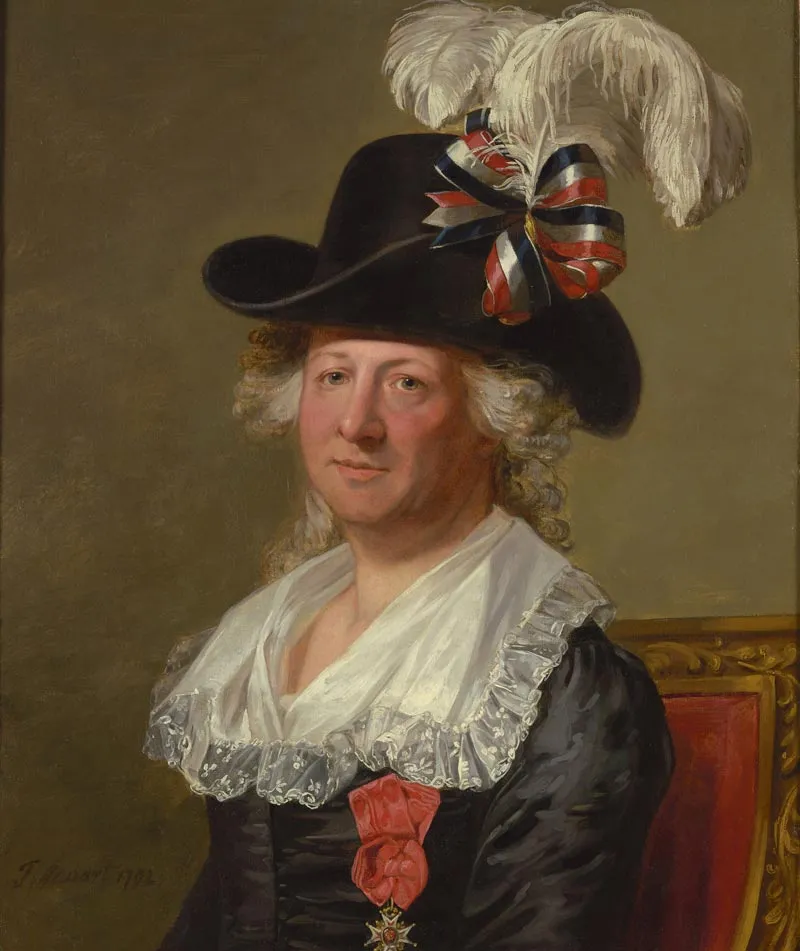France’s Enigmatic Chevalier d'Eon: Cross-Dresser, Spy & Master of Deception
French Emperor Louis XV created one of the earliest secret services in history, the Secret du Roi (the King’s Secret), and in the midst of war with England recruited one of its most famous spies, Chevalier d'Éon.

Born Charles Geneviève Louis Auguste André Thimothée d'Eon de Beaumont in 1728, the Chevalier grew up in a minor aristocratic family. Tracing the Chevalier's story is difficult, as the British Museum notes, as there are conflicting accounts about D'Éon's life mingled with speculation and rumor.
It appears Charles de Beaumont's standout moment occurred at Versailles when, invited to a costume ball by the Countess of Rochefort, the Chevalier appeared dressed as a woman. The disguise prompted the Prince of Conti to recruit him into the Secret du Roi.
Dispatched to Russia in 1755 - and disguised as a woman - the Chevalier undertook a mission to persuade the Russian Empress Elizabeth I to ally with France against the English and Prussians.
Demonstrating remarkable skill, D’Eon reportedly alternated between two personas: Lia de Beaumont, a transvestite integrated into the empress's cabinet, and Charles de Beaumont, her brother. This dual role facilitated the alliance between Russia and France. Charles de Beaumont returned to France, presenting Russia's plan of attack against the Prussians.
"The brand new social experience where you activate your gaming skills as you train like a spy."
- TimeOut
Take on thrilling, high-energy espionage challenges across different game zones.

THE DOUBT OF AN ENTIRE KINGDOM
D'Eon first came to London in 1763 to negotiate the end of the Seven Years War. Rumors soon circulated that the Chevalier might actually be a woman. Their soft features, symmetrical names, and ambiguity fueled the speculation.
The Chevalier caused a scandal with the publication of secret diplomatic documents in Lettres, mémoires & négociations. The book made accusations about the new ambassador to London, the Comte de Guerchy, who’d stripped D’Éon of their post and demoted them to secretary. There were even accusations that Guerchy had attempted to poison the Chevalier at a dinner held at the ambassador's residence. The publication also revealed private correspondence between the embassy and the French court.
D’Éon eventually sought political exile in London. Dispatched by the King, an envoy confirmed what many suspected - the Chevalier d'Eon was living as a woman. French King Louis XVI (1774-92) legally permitted D’Éon to present as female as long as it was a lifelong commitment. Some reports say D'Eon used secret letters to blackmail the French king and was paid an income (some call it a pension) from 1777.
Years later, D'Eon achieved fame in Britain as a celebrity female fencer, according to Britain’s National Portrait Gallery.
D’Éon lost their diplomatic pension after the French Revolution began in 1789 and died in poverty in 1810. An autopsy found that while DÉon had male genitalia, their body also possessed female characteristics.
SPYSCAPE+

Join now to get True Spies episodes early and ad-free every week, plus subscriber-only Debriefs and Q&As to bring you closer to your favorite spies and stories from the show. You’ll also get our exclusive series The Razumov Files and The Great James Bond Car Robbery!


Gadgets & Gifts
Explore a world of secrets together. Navigate through interactive exhibits and missions to discover your spy roles.
Your Spy Skills
We all have valuable spy skills - your mission is to discover yours. See if you have what it takes to be a secret agent, with our authentic spy skills evaluation* developed by a former Head of Training at British Intelligence. It's FREE so share & compare with friends now!
* Find more information about the scientific methods behind the evaluation here.


Stay Connected
Follow us for the latest
TIKTOK
INSTAGRAM
X
FACEBOOK
YOUTUBE